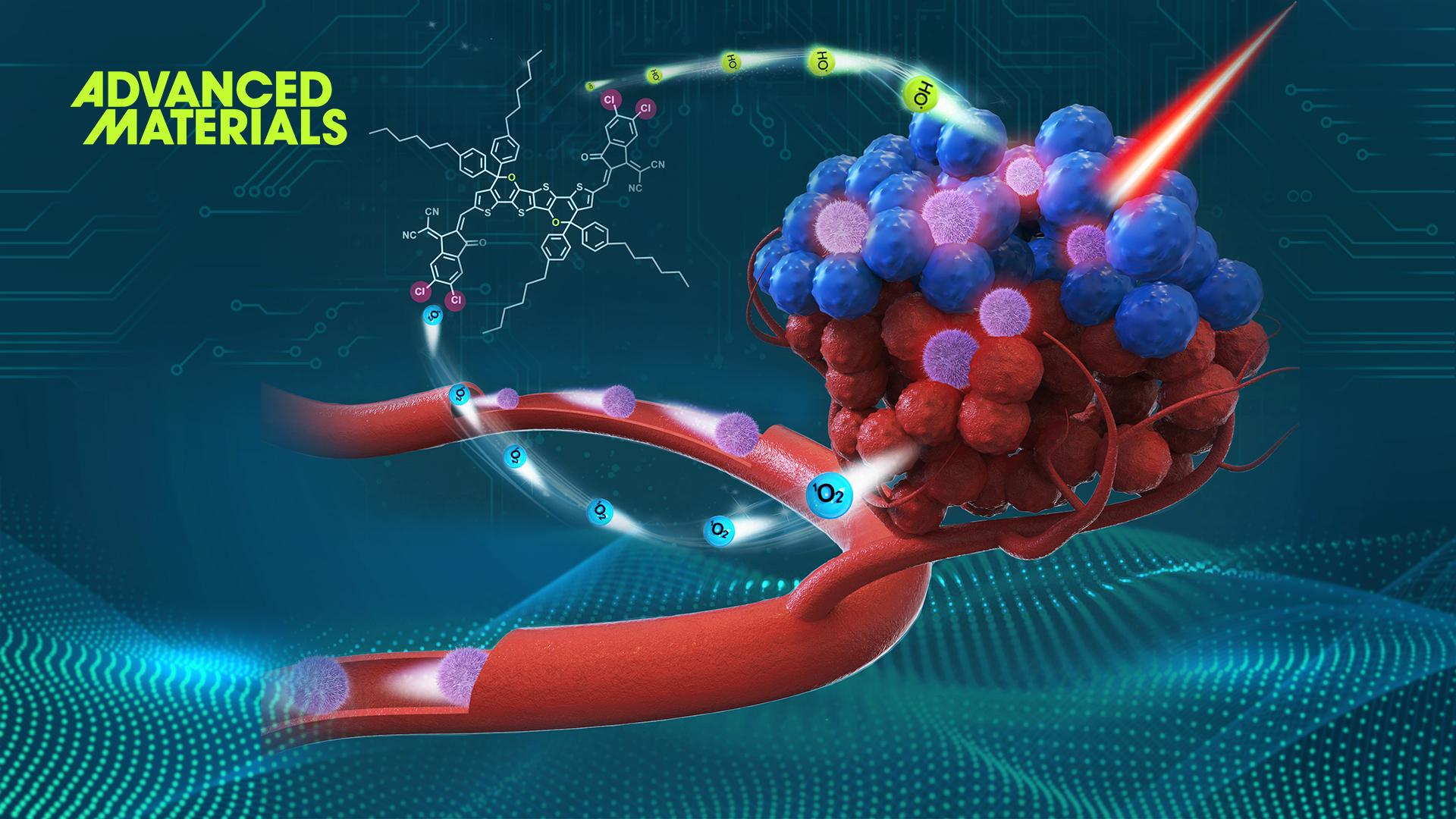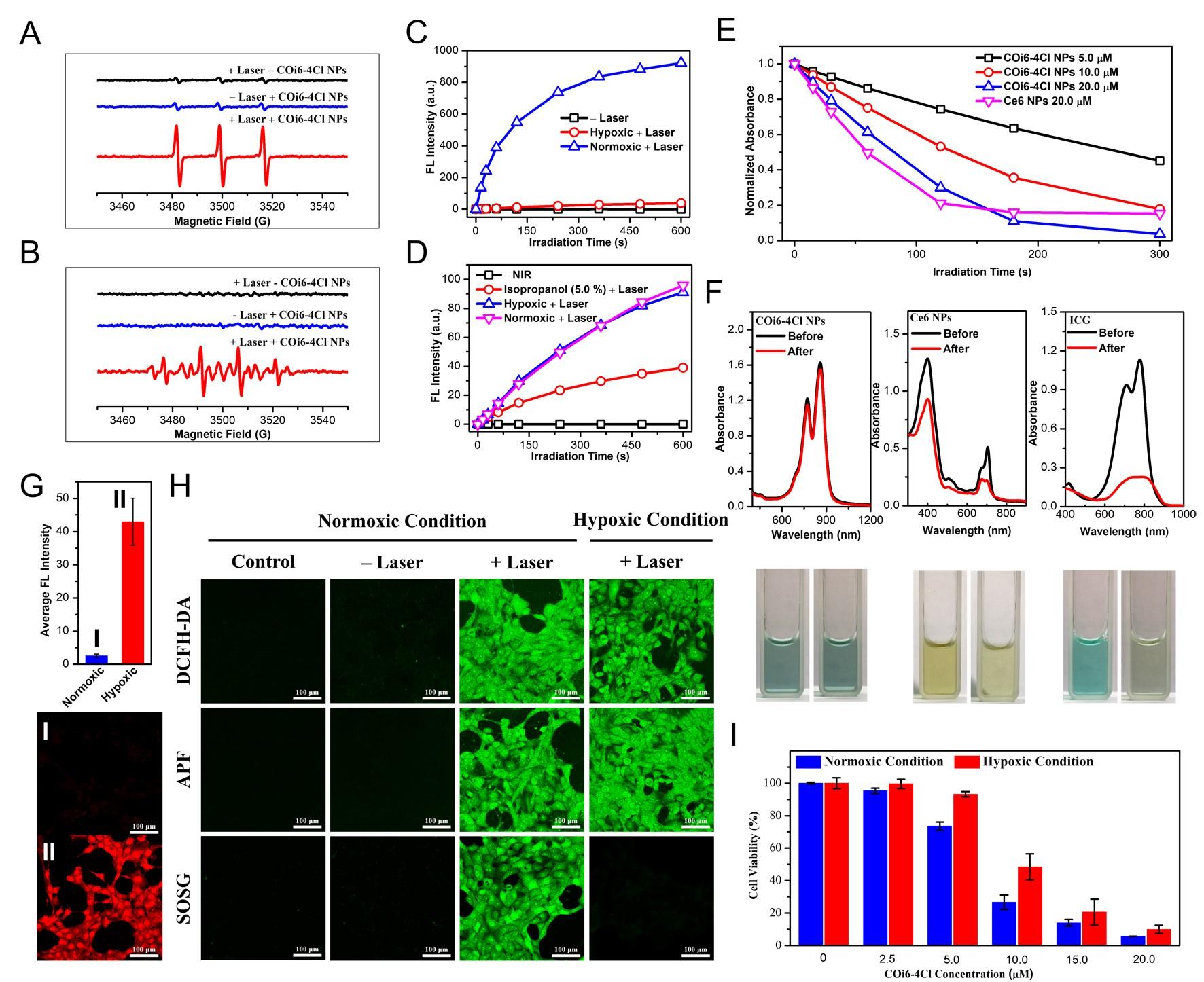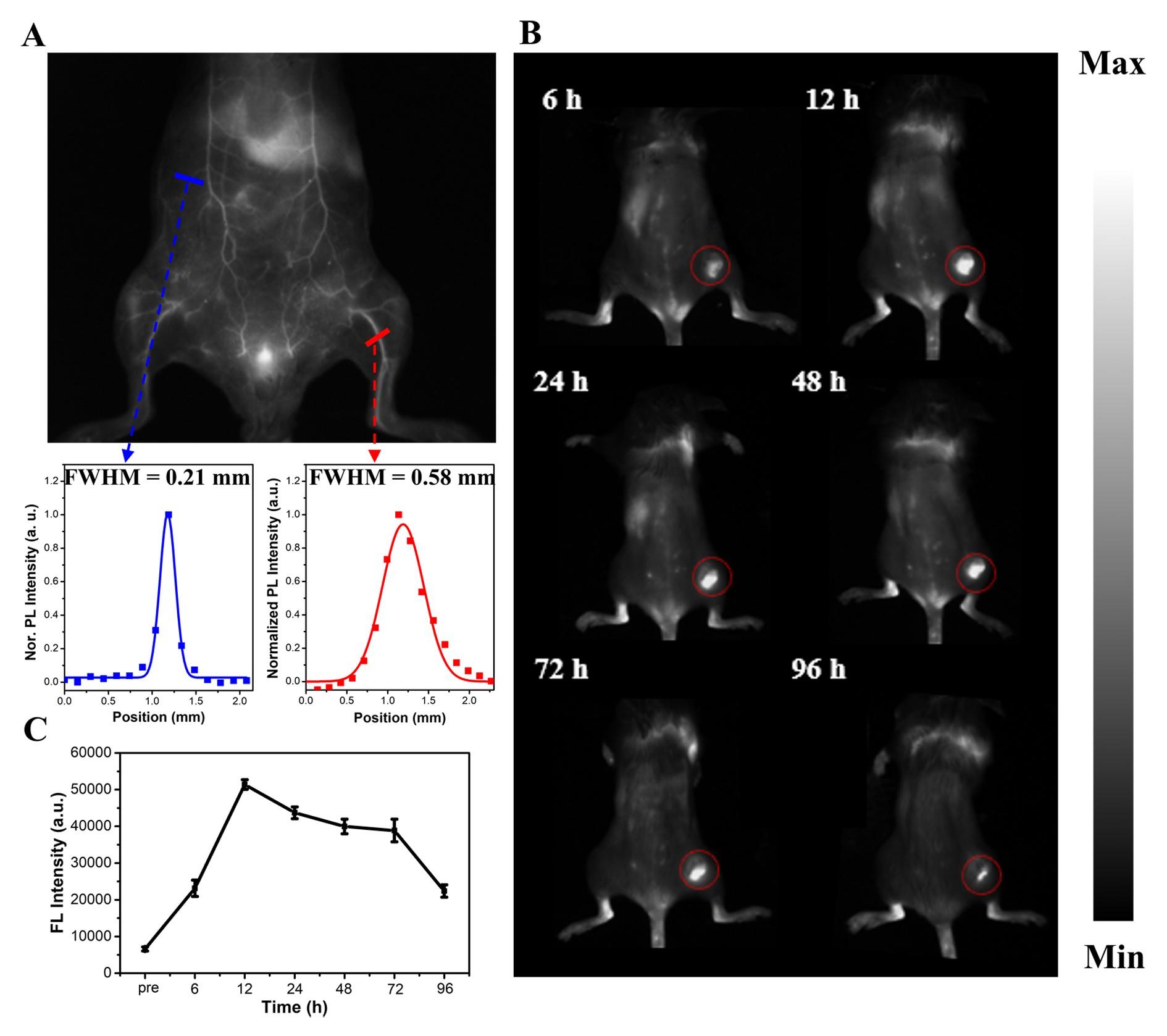As a common feature in a majority of malignant tumors, hypoxia has become the Achilles’ heel of photodynamic therapy (PDT). The development of type-I photosensitizers that show hypoxia tolerance PDT efficiency provides a straightforward way to address this issue.
However, type-I PDT material has rarely been discovered. Associate Professor Leilei Tian (Materials Science and Engineering) led her research team to report a π-conjugated molecule with A-D-A configuration, COi6-4Cl. The team published their work in the high-impact academic journal, Advanced Materials (IF= 24.410), entitled “ An NIR‐II‐Emissive Photosensitizer for Hypoxia‐Tolerant Photodynamic Theranostics.”

According to their discovery, the H2O -dispersible nanoparticle of COi6-4Cl can be activated by 880-nm laser, which displays hypoxia-tolerance type I/II combined PDT capability, and more notably, a high NIR-II fluorescence with a quantum yield over 5%. Therefore, COi6-4Cl shows great potential in precise PDT cancer therapy against hypoxia challenges.

Figure 1. Schematic illustration of the NIR-II emissive photosensitizer (COi6-4Cl) for hypoxia-tolerance photodynamic theranostics.
In the previous reports, the analogs of COi6-4Cl were applied in the fabrication of non-fullerene organic solar cells due to the superior absorptivity of this kind of molecules with acceptor-donor-acceptor (A-D-A) configurations. For COi6-4Cl, the electron-rich oxygen atoms significantly improve the electron-donating capability of the donor core, which combines with the strong electron-withdrawing chloride substituted dicyanovinylindanone, resulting in an intense intramolecular charge transfer and a low bandgap of 1.27 eV. Through the type I PDT path of the photochemical reaction with H2O and via type II path, respectively, COi6-4Cl exhibited excellent photo-sensitizing properties under an 880-nm light excitation, which was able to produce •OH and 1O2. It is rarely observed that organic PSs with such deep light absorption and type-I PDT capability with less O2 consuming. Construction of a strong D-A structure is the widely accepted strategy to develop high-efficient NIR-activated PSs. The very strong intramolecular charge transfer of COi6-4Cl resulted in a small energy gap of 0.27 eV between the singlet and triplet excited-states (∆EST), which promoted the PDT-related intersystem crossing process (kISC) and can explain the unconventional PDT properties of COi6-4Cl. In addition, COi6-4Cl showed a credible resistance to photo-bleaching, and all these properties benefited the anti-tumor efficacy of COi6-4Cl in the hypoxia tumor environment.

Figure 2. COi6-4Cl NPs display hypoxia-tolerance type I/II combined PDT capability.
COi6-4Cl also exhibited superior NIR-II fluorescence both in solution and in solid states with highly suppressed non-radiative decay. The bridged rigid structure of COi6-4Cl with depressed molecular vibrations resulted in a high fluorescence quantum yield of 33.4 % in chloroform. Moreover, the four bulky side chains hindered the intermolecular face-to-face π-π stacking, which caused a strong NIR-II emission in the solid state. After encapsulated in amphiphilic block copolymer and dispersed into H2O, COi6-4Cl nanoparticles (NPs) showed a bright fluorescence centered at 1035 nm and a negligible heat-conversion effect. Although a part of light energy absorbed by COi6-4Cl was converted to the photochemical reaction with H2O through the non-radiation process, COi6-4Cl NPs still exhibited a leading PLQY (~5%) among the existent NIR-II organic nanoparticles, which would benefit the fluorescence-guided in vivo PDT treatment. Noteworthily, due to the particular aggregation state, COi6-4Cl NPs showed aggregation-independent high PLQY and PDT efficiency (13-fold higher than that of ICG under 808 nm irradiation) when the dye loading amounts widely ranged from 20 to 60 wt. %. Finally, the combination of unique NIR-II fluorescence property and hypoxia-tolerance PDT efficiency is conducive to NIR-II image-guided PDT treatment.
 Figure 3. COi6-4Cl NPs are also competent in deep tissue imaging by a strong NIR-II emission.
Figure 3. COi6-4Cl NPs are also competent in deep tissue imaging by a strong NIR-II emission.
Postdoc Lanqing Li, Chen Shao, and the graduate student Tao Liu are the first co-authors of this paper. Associate Professor Leilei Tian is the corresponding author, and SUSTech is the first contributing institution.
This research work has been supported by the National Natural Science Foundation of China, Shenzhen Fundamental Research Programs, Shenzhen Science and Technology Innovation Commission, and Guangdong Innovative and Entrepreneurial Research Team Program.
Paper link: https://doi.org/10.1002/adma.202003471
Proofread ByEddy Salguero, Yingying XIA
Photo By